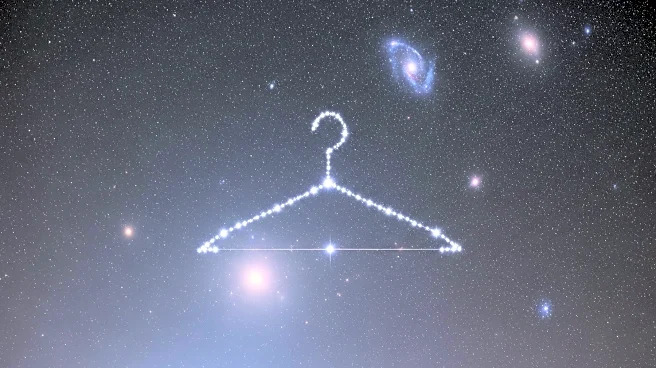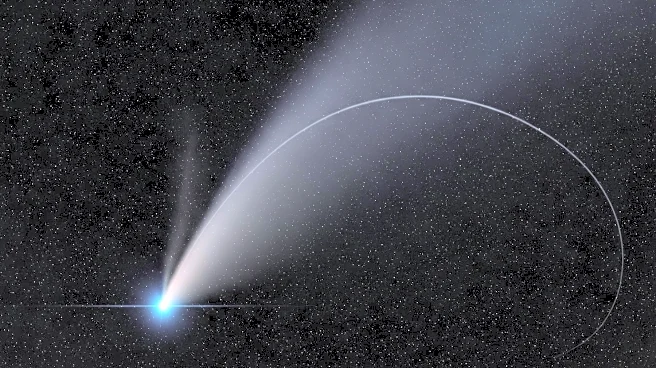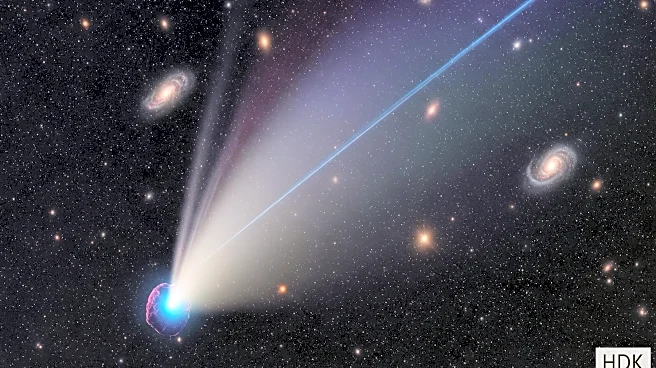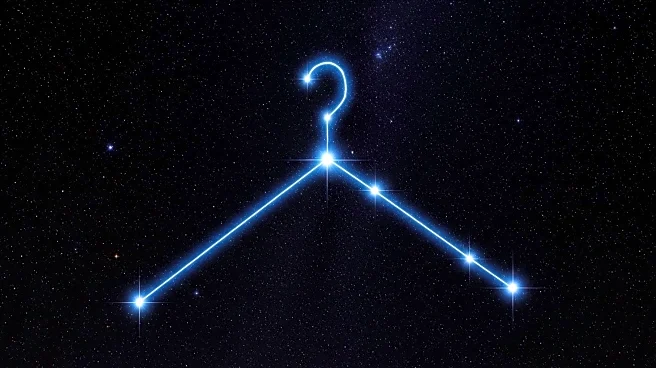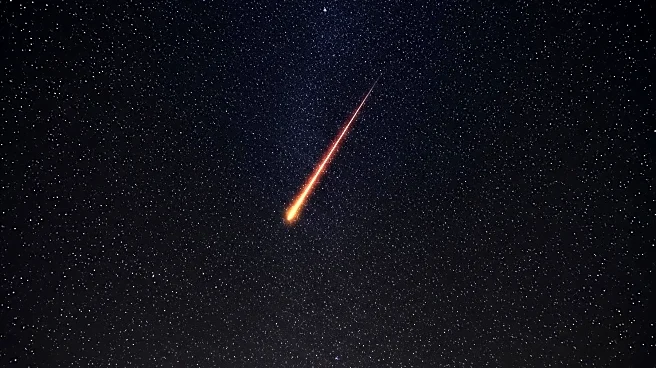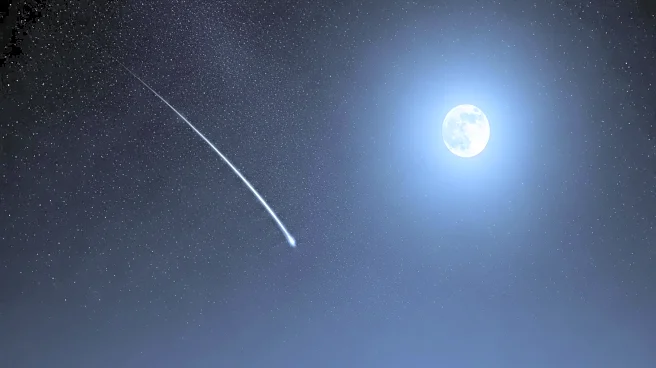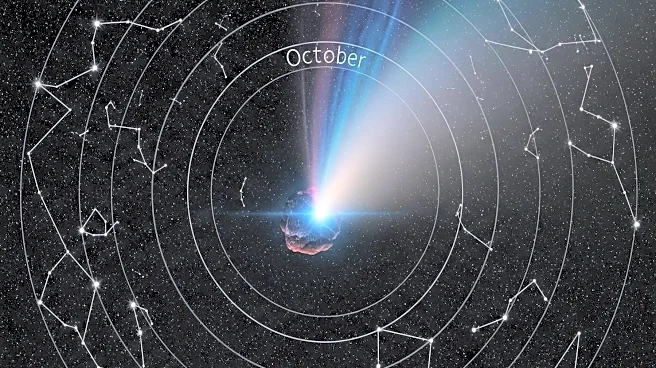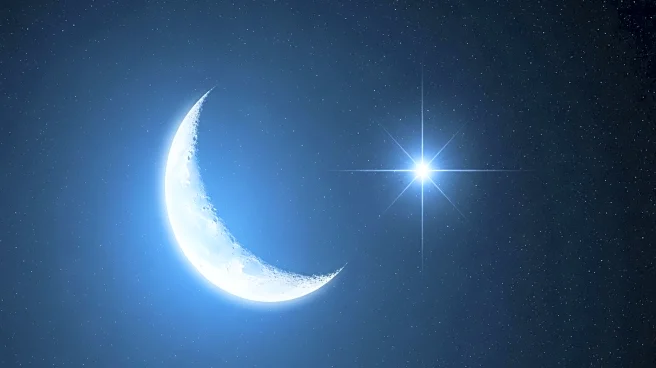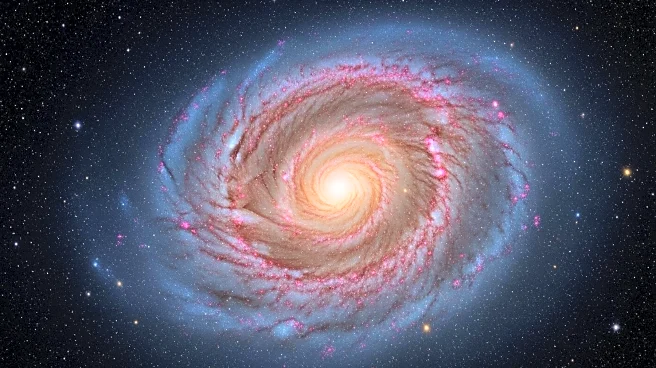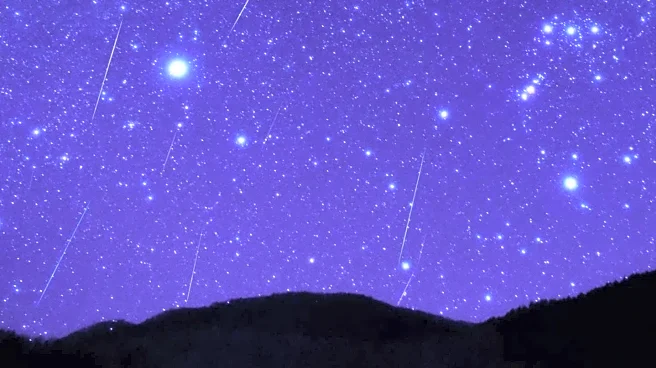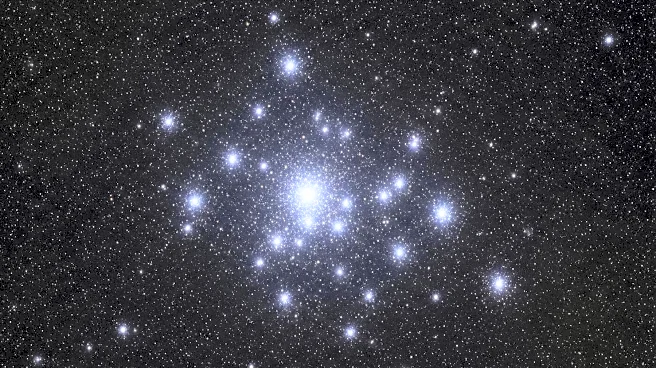What is the story about?
What's Happening?
The Coathanger, also known as Collinder 399, is an asterism located in the constellation Vulpecula. It is visible throughout most of the Northern Hemisphere's autumn and is best observed with binoculars or a small telescope. The asterism, which resembles a coathanger, consists of stars that are not physically related but appear in the same area of the sky. It was first recorded by Persian astronomer Al Sufi and later mapped by American astronomer Dalmiro Francis Brocchi. The Coathanger is a popular target for amateur astronomers and offers a delightful viewing experience.
Why It's Important?
Observing the Coathanger provides an opportunity for amateur astronomers to engage with the night sky and explore the beauty of celestial objects. It highlights the importance of asterisms in astronomy and their role in helping observers navigate the sky. The Coathanger's visibility and distinct shape make it an accessible target for stargazers, fostering interest in astronomy and encouraging public engagement with science. The asterism also serves as a reminder of the historical contributions of astronomers from different cultures and eras.
What's Next?
Astronomy clubs and observatories may organize viewing sessions to introduce the Coathanger to new audiences. Observers are encouraged to explore the asterism and other celestial objects using binoculars or telescopes. The experience may inspire further interest in astronomy and lead to participation in additional stargazing activities. The Coathanger's visibility during autumn provides an ideal opportunity for educational outreach and public engagement with the night sky.
Beyond the Headlines
The Coathanger's appeal lies in its simplicity and accessibility, making it a favorite among amateur astronomers. It underscores the importance of preserving dark skies for astronomical observations and the impact of light pollution on stargazing. The asterism also highlights the role of historical records in shaping modern astronomy and the contributions of astronomers from diverse backgrounds.
AI Generated Content
Do you find this article useful?
